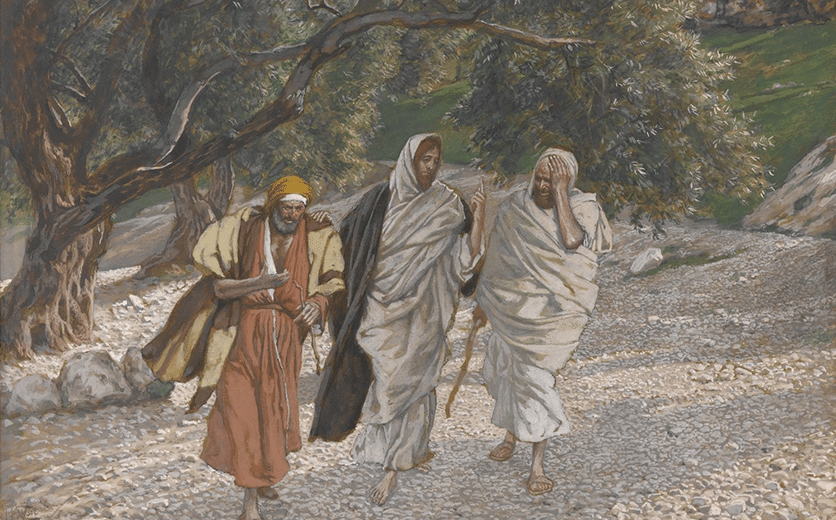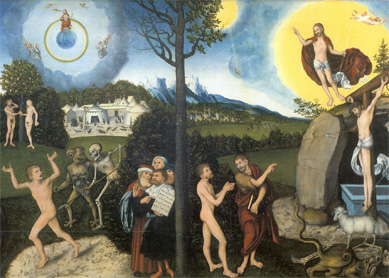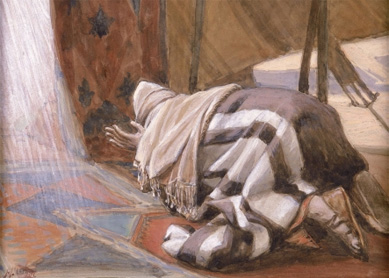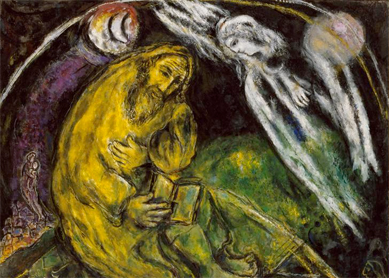The New Testament writers interpreted the events of Jesus’s life, death, and resurrection through the lens of what Christians now call the Old Testament. When Paul says that Christ died and rose “in accordance with the scriptures” (1 Cor 15:3–4), he expresses a belief about Christ’s relationship to the sacred texts of first-century Jews that was common to early Christians, namely, that Jesus’s life, death, and resurrection constituted the culmination of God’s dealings with ancient Israel. Yet the manner in which the writers of the texts that became the New Testament incorporated Jewish scripture varied.
How did Jesus fulfill the Scriptures in the gospels?
In the story of two disciples’ encounter with Jesus on the road to Emmaus, Luke writes, “Then beginning with Moses and all the prophets, [Jesus] interpreted to them the things about himself in all the scriptures” (Luke 24:27). This statement captures a feature common to all four gospels. The gospel writers each present the life of Jesus in relation to the texts that would come to be known to later Christians as the Old Testament, but they do so in different ways.
Matthew, for example, frequently uses what scholars call “formula quotations.” That is, in several places he portrays some event in the life of Jesus as fulfilling what was said through one of the prophets. Although such statements might make it seem as though Matthew understood the prophets to have predicted specific events in Jesus’s life, the picture is a bit more nuanced. For example, Matt 2:15 cites a verse from the prophet Hosea, “Out of Egypt I have called my son” (Hos 11:1). Although Matthew had already spoken of Jesus as God’s son, there is more to this use of Hosea than the Christian belief in Jesus’s divine sonship. The Old Testament frequently refers to Israel as God’s son (for example, Exod 4:22). Read in context, Hosea is speaking of Israel’s exodus from Egypt. By citing this verse, then, Matthew is drawing a comparison between Jesus and the people Israel. As Israel came out of Egypt at the time of Moses, so Jesus came out of Egypt during his childhood. In a loose sense, Jesus reenacts Israel’s history, but with different results.
The Gospel of John more frequently takes images from Israel’s Scriptures and applies them to Jesus. John the Baptist, for example, twice refers to Jesus as “the lamb of God” (John 1:29, 36). This phrase most likely evokes the Passover lamb, whose blood was smeared on the doorposts and lintel of the houses of the Israelites to protect them from the final plague (Exod 12:1–13). The Gospel of John alludes to this event again when it notes that the soldiers did not break Jesus’s legs (John 19:31–37; Exod 12:46). Jesus also refers to himself as “the good shepherd” (John 10:11), reflecting a broad tradition in Israel’s Scriptures that speaks of the Lord as a shepherd (for example, Ps 23; Ezek 34). Many of these biblical allusions highlight the ways in which the author of John—like the other evangelists—understood Jesus’s saving work.
The accounts of Jesus’s passion and death are saturated with allusions to and quotations of Scripture. All four gospel writers interpret Jesus’s death in light of the Psalms, especially Ps 22 (Matt 27:35, 43, 46, and parallels), Ps 31 (Luke 23:46), and Ps 69 (Matt 27:48; John 19:28–29). At least two features of these psalms may explain this selection. First, like many psalms, these hymns are closely associated with David. The evangelists’ use of these texts thus underscores Jesus’s royal identity as the Messiah, who many early Jews thought would be a descendant of David. Second, these psalms depict a suffering righteous person who is ultimately vindicated by God. They thus reinforce the shape of the story of Jesus’s passion, death, and resurrection.
How did other parts of the New Testament draw on the Scriptures?
Like the gospels, several of Paul’s letters draw on the Scriptures of Israel, often in surprising ways. One of the most daring things Paul does with these texts is to apply them to his gentile churches. When writing to a largely gentile audience in 1 Cor 10, Paul refers to the ancient Israelites as “our ancestors” (v. 1). He then proceeds to recount different aspects of the exodus story, citing the Israelites’ disobedience as a warning against idolatry (vv. 1–17). Just as some of the Israelites fell because of their sins, so, too, the Corinthians run the risk of punishment if they persist in their idolatry. Paul thus sees these ancient texts as having an ongoing moral application to the life of gentile Christians.
Elsewhere Paul explains the inclusion of the gentiles in God’s promises by appealing to Abraham and to David as models for both Jewish and gentile believers. Paul’s discussion of Gen 15:6 in Rom 4, for instance, draws a connection between Abraham’s faith and his righteousness. Because Abraham’s act of faith preceded his circumcision, Paul argues, he can serve as the father of both the circumcised (that is, Jews) and the uncircumcised (that is, gentiles). Toward the end of the letter, Paul cites a series of texts from the Law, the Prophets, and the Psalms expressing a hope that Jews and gentiles will worship God together (Rom 15:7–13).
Other New Testament writings also interpret Jesus’s identity through the lens of Jewish scripture. The Letter to the Hebrews, for example, combines traditions surrounding the mysterious figure of Melchizedek with the description of the Day of Atonement in Lev 16 to interpret Jesus’s activity in the heavenly sanctuary. Like Melchizedek, Jesus is “a priest forever” based on the indestructible life he received through the resurrection (Heb 7:15–16). As the high priest would enter the holy of holies in the temple on the Day of Atonement, so Jesus entered the heavenly sanctuary to offer sacrifice on behalf of the human race (Heb 9:23–28).
The book of Revelation can be seen as a tapestry of biblical imagery and allusion, though it nowhere explicitly cites Israel’s Scriptures in the way that other New Testament writers do. The seer describes his vision drawing on all the major sections of Israel’s Scriptures. Jesus shares characteristics with the “Ancient One” of Dan 7 (Rev 1:12–16; Dan 7:9). The punishments God metes out reflect many of the plagues in the book of Exodus (Rev 16:3–4; Exod 7:14–25). Revelation also describes Jesus with imagery from the Psalms (see, for example, Rev 12:5; Ps 2:8–9). The final vision of Revelation forms a bookend with Genesis, with a reference to the tree of life and other imagery from paradise (Rev 22:1–5). These biblical images imply that Jesus’s saving work sums up everything that God spoke to his people Israel through their Scriptures.
A surface understanding of the writings of the New Testament is possible without any knowledge of the Old Testament. If, however, one wants to better understand the context of the New Testament, it is essential to pay attention to the ways that these writings draw on the Scriptures of Israel.





